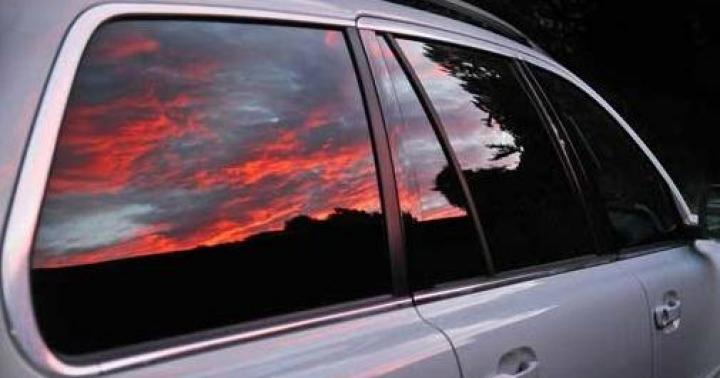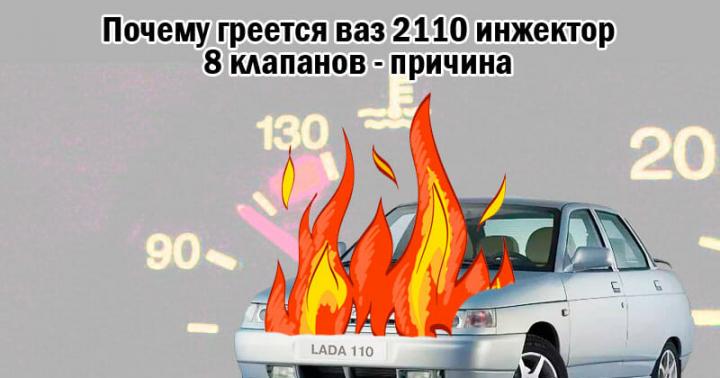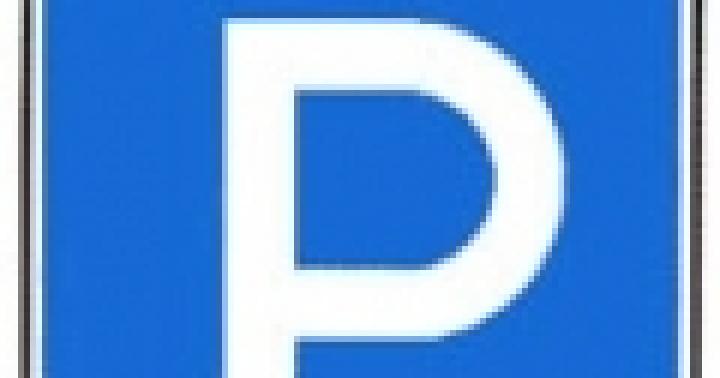An analogy model, where complex, streamlined forms are simplified and only general principle building a structure, which allows the model to be performed by primary school students. The bus has a wagon-type body, painted in different colors, so you can use white thick paper in the work with further painting of some parts.
First, the front and rear parts of the body are prepared. On a sheet of paper measuring 63X70 mm, flaps for gluing are left on three sides, cuts with a depth of 15 mm are made on both sides and the fold line is continued. The valves are bent at right angles, along the second line, to which the cut reaches, the fold is made less, during installation the workpiece will take the desired shape (Fig. 50, a). The second part is prepared in a similar way.
For the side walls of the body, take a strip of paper 60X150 mm in size, cut off the upper corners, leave the valve for gluing. At the bottom, two cutouts are made for the wheels (with a radius of 11 mm). The bus has two doors, four windows, which are better designed on the workpiece, since it is more difficult to make markings on the model. Door height 40 mm, width 20 mm. The second part is prepared in a similar way, but in a mirror image. It has no doors, has five windows, excluding the driver's window (Fig. 50, b).
The frame is made of very thick paper or thin cardboard. On a sheet with a size of 68X150 mm, four cuts with a depth of 15 mm are made on both sides, these will be parts for fixing the axles. Holes are pierced on them next to the fold line with an awl, in the figure they are indicated by dots. Then the folds of the valves and fasteners are made, an axis made of thin copper wire or a paper clip is inserted into the holes (Fig. 50, c, e).
The roof is prepared from a rectangular sheet of paper, on which the corners are cut off. The wheels are cut from cardboard, each consisting of 3-4 discs glued together. In the center of the parts, holes are pierced with an awl so that the axis fits tightly into them. With free rotation, the ends can be greased with glue. When it dries, the wheels will hold better.
When all the details are prepared, they are installed. First, the wheels are attached, then the body is glued, they are mounted on the frame, the roof is glued last. Finishing is done on the finished model, the glasses are made using the application of blue or blue paper, the radiator lining, headlights and other small details are drawn with a felt-tip pen or colored pencils. In front, below the windshield, you need to put the letter "L" - the brand of the car (Fig. 50, g).
The proposed model can be simplified. The frame is made in the form of a box; in this design, axles are not needed. The wheel cutouts are not needed on the side parts, they can be glued directly to the body. The craft will be motionless. This option is easy to develop independently, using the principle of construction of the proposed model (col. Table V). Similar changes can be made to other models.
In the process of work, children encounter various technical problems that must be able to solve on their own. To do this, you need to learn how to design yourself, make changes to finished products, make sketches, drawings from real objects, drawings, photographs. This approach to work contributes to the development of design thinking, increases the technical literacy of children.
And finally, buses! That's right, today we publish diagrams - sweeps of buses made of paper.
If you have already tried to glue paper cars, models of tanks and airplanes made of paper, then you can easily cope with making the one you like. bus model.
We offer glue bus models still Soviet times.
We glue buses from paper
In order to make these buses, you will need to print out diagrams of parts on thick paper (if there is no thin cardboard, then you can cut a sheet of Whatman paper into several sheets the size of a sheet A-4).
If you printed on a black and white printer, then color the sweep of the buses.
Then cut out all the pieces with scissors. At the same time, try to keep the details neat.
Then, using a ruler and an old non-writing pen, make neat folds for gluing on the bus parts.
Now you can start gluing the model. Any glue is suitable for this, both dry glue stick and liquid PVA (for greater accuracy, apply it either with a brush or with a match). When gluing parts, hold the surfaces to be glued for a while until they dry.
Paper bus schemes

Scheme of the MAZ-104 bus made of paper

Paper bus - diagram - scan

Paper bus - diagram - scan LIAZ 5256

Scheme - a scan of a MAZ bus made of paper

Scheme - a scan of a LAZ bus made of paper

Page 14 of 21
An analogy model, where complex, streamlined forms are simplified and only a general principle of constructing a structure is given, which allows the model to be performed by primary school students. The bus has a wagon-type body, painted in different colors, so you can use white thick paper in the work with further painting of some parts.
First, the front and rear parts of the body are prepared. On a sheet of paper measuring 63X70 mm, flaps for gluing are left on three sides, cuts with a depth of 15 mm are made on both sides and the fold line is continued. The valves are bent at right angles, along the second line, to which the cut reaches, the fold is made less, during installation the workpiece will take the desired shape (Fig. 50, a). The second part is prepared in a similar way.
For the side walls of the body, take a strip of paper 60X150 mm in size, cut off the upper corners, leave the valve for gluing. At the bottom, two cutouts are made for the wheels (with a radius of 11 mm). The bus has two doors, four windows, which are better designed on the workpiece, since it is more difficult to make markings on the model. Door height 40 mm,  width 20 mm. The second part is prepared in a similar way, but in a mirror image. It has no doors, has five windows, excluding the driver's window (Fig. 50, b).
width 20 mm. The second part is prepared in a similar way, but in a mirror image. It has no doors, has five windows, excluding the driver's window (Fig. 50, b).
The frame is made of very thick paper or thin cardboard. On a sheet with a size of 68X150 mm, four cuts with a depth of 15 mm are made on both sides, these will be parts for fixing the axles. Holes are pierced on them next to the fold line with an awl, in the figure they are indicated by dots. Then the folds of the valves and fasteners are made, an axis made of thin copper wire or a paper clip is inserted into the holes (Fig. 50, c, e).
The roof is prepared from a rectangular sheet of paper, on which the corners are cut off. The wheels are cut from cardboard, each consisting of 3-4 discs glued together. In the center of the parts, holes are pierced with an awl so that the axis fits tightly into them. With free rotation, the ends can be greased with glue. When it dries, the wheels will hold better.
When all the details are prepared, they are installed. First, the wheels are attached, then the body is glued together, mounted on the frame, the roof is glued last. Finishing is done on the finished model, the glasses are made using the application of blue or blue paper, the radiator lining, headlights and other small details are drawn with a felt-tip pen or colored pencils. In front, below the windshield, you need to put the letter "L" - the brand of the car (Fig. 50, g).
The proposed model can be simplified. The frame is made in the form of a box; in this design, axles are not needed. The wheel cutouts are not needed on the side parts, they can be glued directly to the body. The craft will be motionless. This option is easy to develop independently, using the principle of building the proposed model. Similar changes can be made to other models.
In the process of work, children encounter various technical problems that must be able to solve on their own. To do this, you need to learn how to design yourself, make changes to finished products, make sketches, drawings from real objects, drawings, photographs. This approach to work contributes to the development of design thinking, increases the technical literacy of children.


